Serves 4-12
Level of difficulty 3
Procedure:
Smoking/roasting
For best results, smoker/oven temperatures should range between 180 F/82 C and 225 F/107 C.
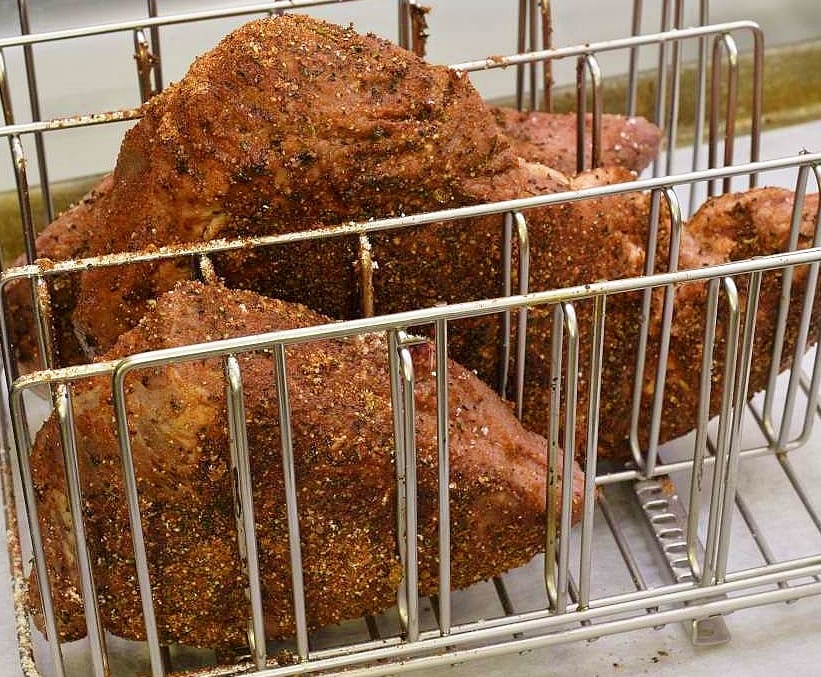
Coat the refrigerated roast well with your choice of seasoning/rub. Stage into the pre-heated smoker (or oven) for four hours or until the internal temperature reaches approximately 140 F/60 C–whichever comes first. Very little moisture is surrendered during this step, the flavor of smoke is effectively imparted and the surface of the roast is fully caramelized/Maillardized.
The primary reason for the counterintuitive pre-seasoning process is is to give us a head start on the development of the Sous Jus. Smoking in advance also contributes the characteristic flavor without the risk of drying out the meat, which could occur if the processes were reversed. Finishing the meat to the shredding point in the smoker itself runs the risk of damaging the surface of the meat to a point beyond the desired desiccation.
Sous vide processing
Preheat the sous vide bath to
165 F/66 C
After smoking, allow the surface to cool for ten minutes. Vacuum seal the meat and stage into the pre-heated sous vide bath. Set a timer for 24 hours. This unusually high sous vide temperature and long interval is necessary to aggressively convert collagen to gelatin. The process model removes as much moisture as necessary so that the meat will “flake” properly.
A word about tenderness:
The sensation of tenderness is subjective and results may vary. The time interval controls the level of tenderness, but a stopwatch cannot be used to MEASURE tenderness. To achieve the level of tenderness that meets your preference, we recommend using the method linked HERE. For more detailed information on beef top round and its unique characteristics, click the link HERE.
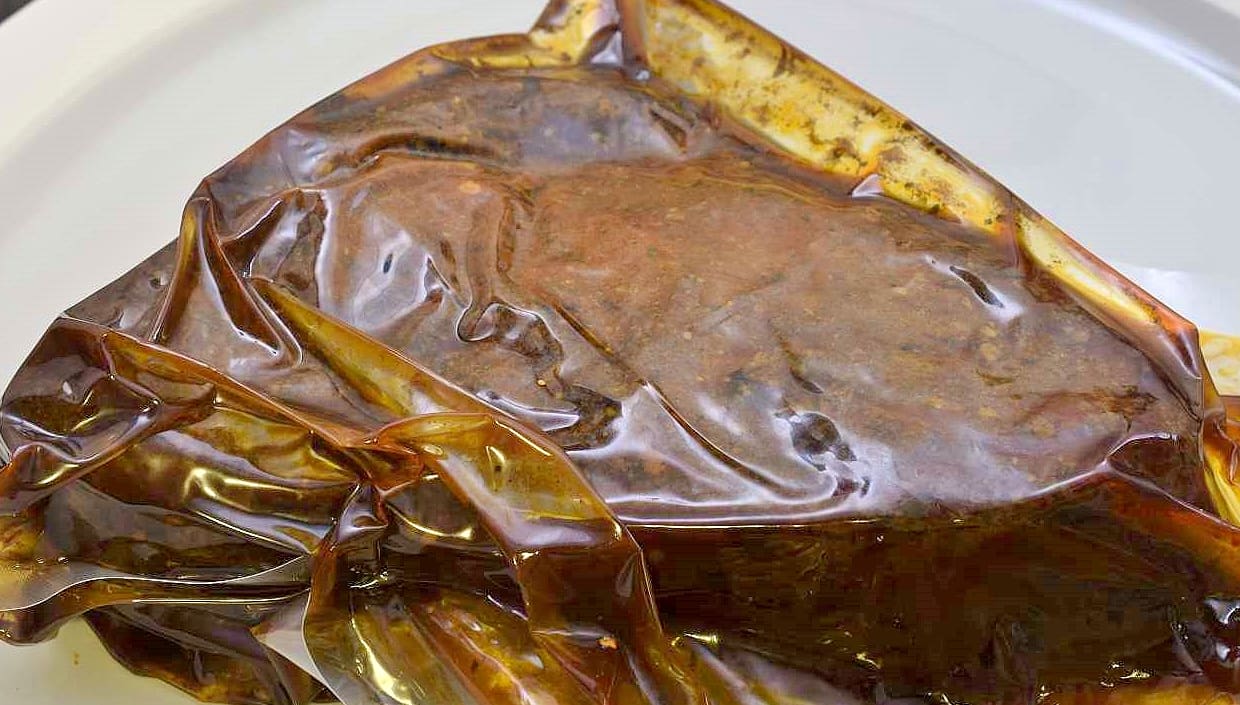
Coleslaw
While you wait for your beef to be processed, combine all the ingredients on the list to make the coleslaw (or use your own recipe). After an hour or so, coleslaw will release some water, so if I make it in advance I make sure to drain it before using it.
After the 24 hours has elapsed, remove the package(s) from the bath and test tenderness as explained in our article. Cut a hole in the corner of the bag and drain the juices.
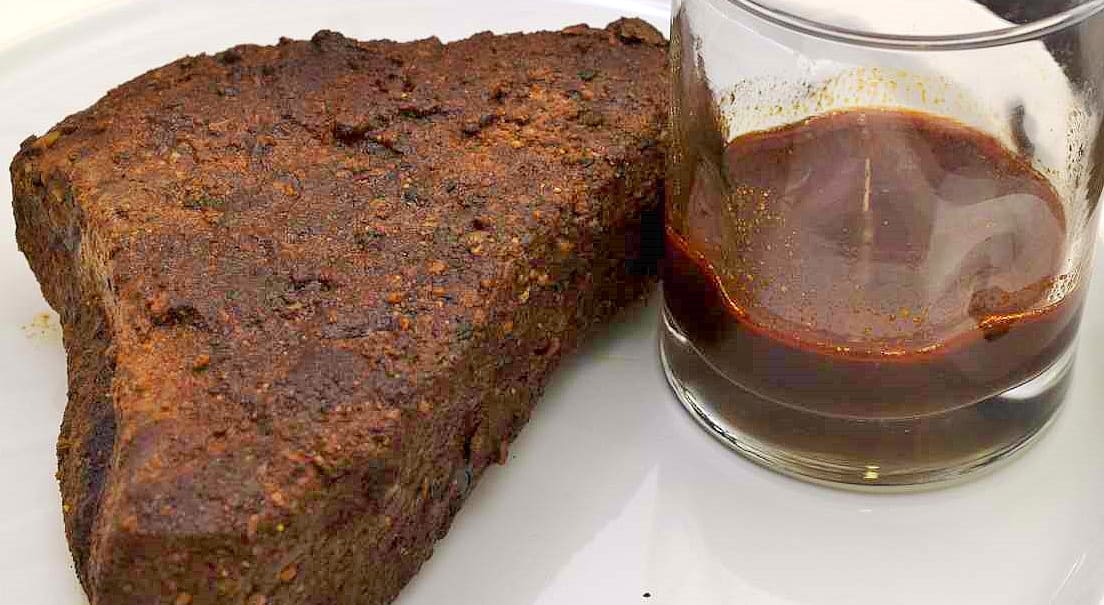
The meat can now be pulled apart at the seams, as it were. I prefer a popular traditional method to separate the fibers–two forks. Gloved hands are also popular.
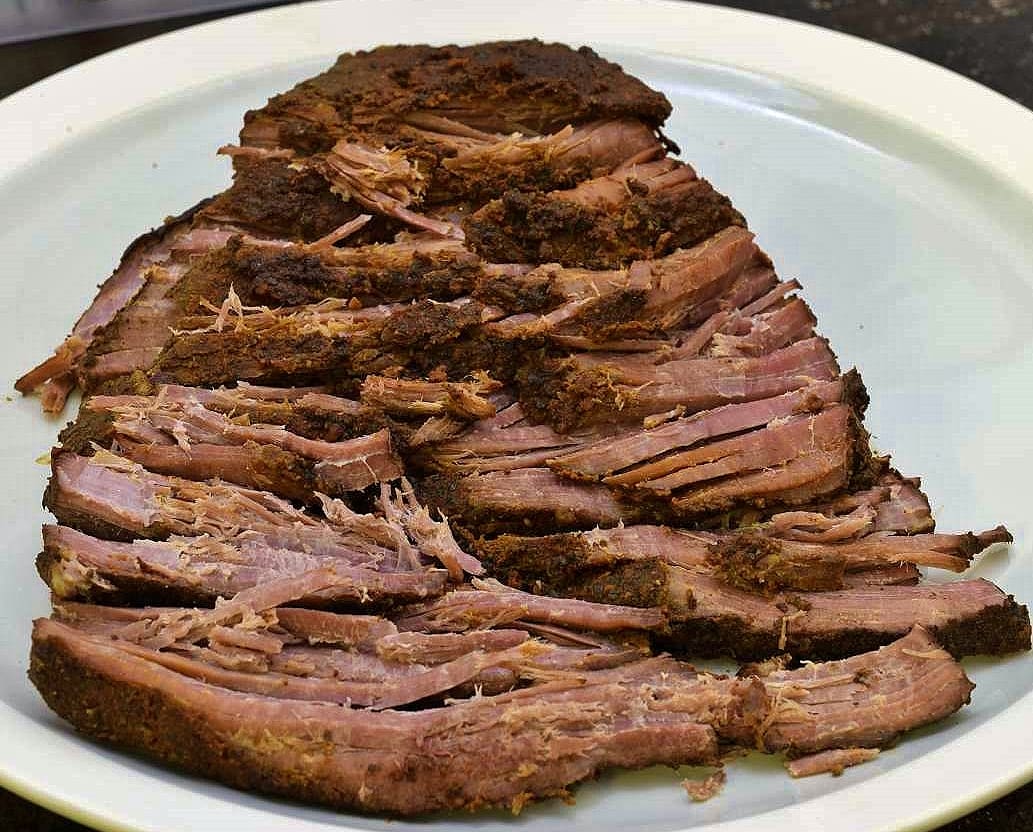
A Kitchenaid type mixer with a paddle attachment can also be used–one must be careful not to “over shred” using this method. I do not endorse any particular product, but there are special tools available to perform this function as well.
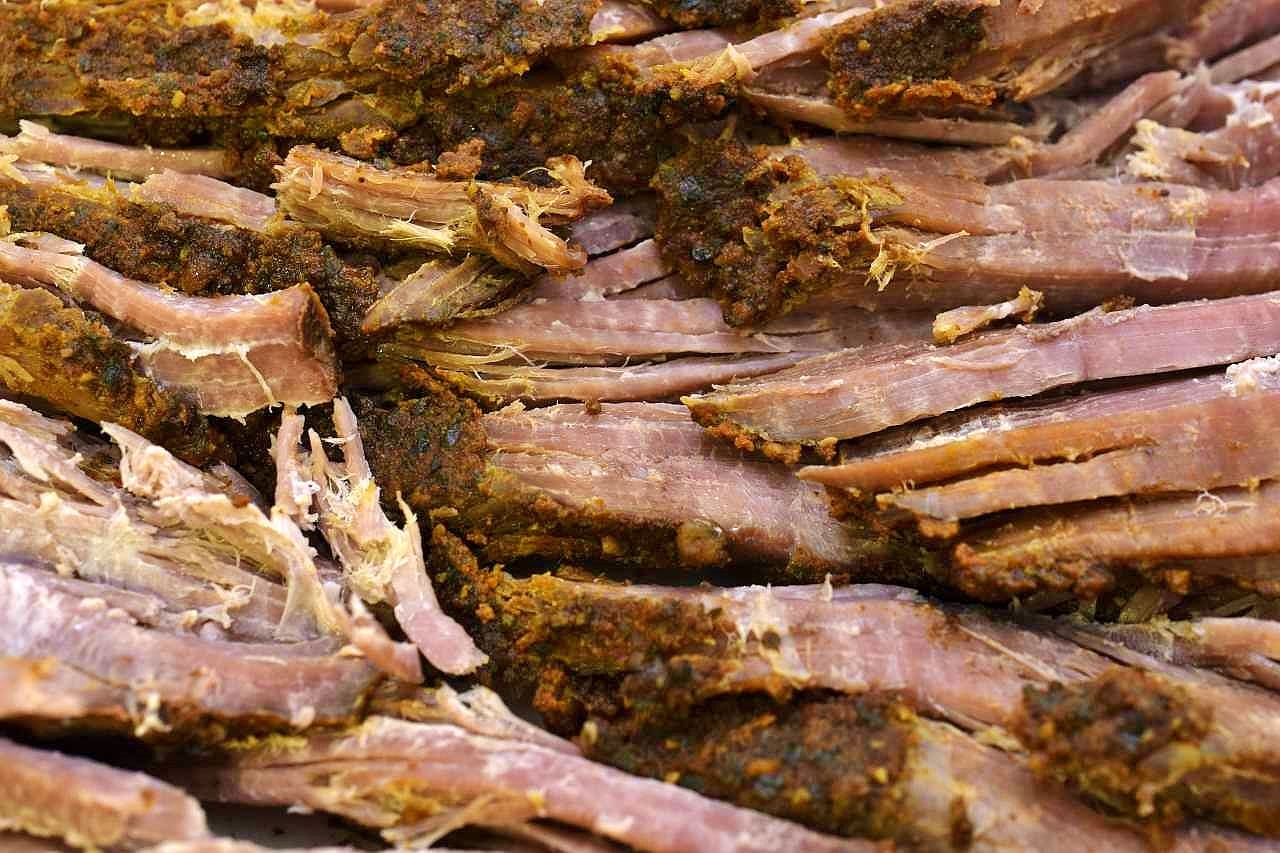
Sauces
There are literally hundreds of versions of sauce applied to pulled beef, pork, and chicken. They are all good, they are all authentic. Regardless of whether you use ketchup (or NOT), the basic principles of emulsion serve well to achieve the desired effect. We provide explanations of butter sauce fabrication linked HERE (the long version) and HERE, (the short version) for this purpose. I always use the same method to make the sauces, but I vary the ingredients on the basis of whim.
Bells and whistles
Once you have your shredded beef and your sauce, you are truly golden–you don’t need anything else. But you are going to WANT other things, and that’s the fun part. There is no right or wrong.
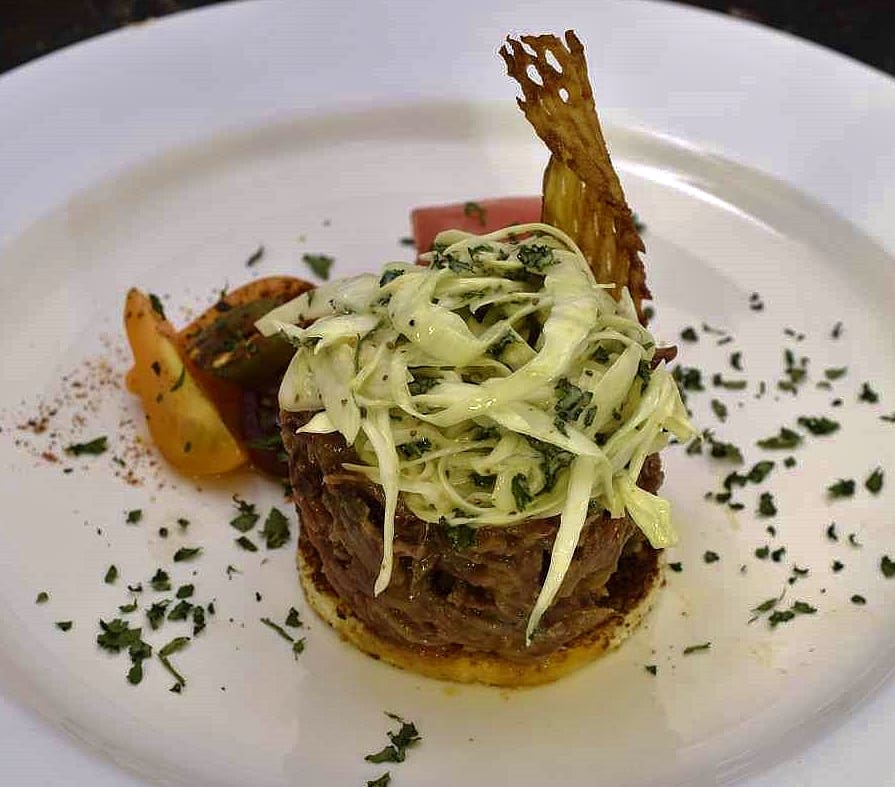
Presented simply on white toast that was cut into a circle, it is no wonder that this dish is iconically representative of American rustic stylings. I like to make my own potato chips. It is not as difficult as it is time consuming–especially when you consider that they come out just like the ones in the bag.
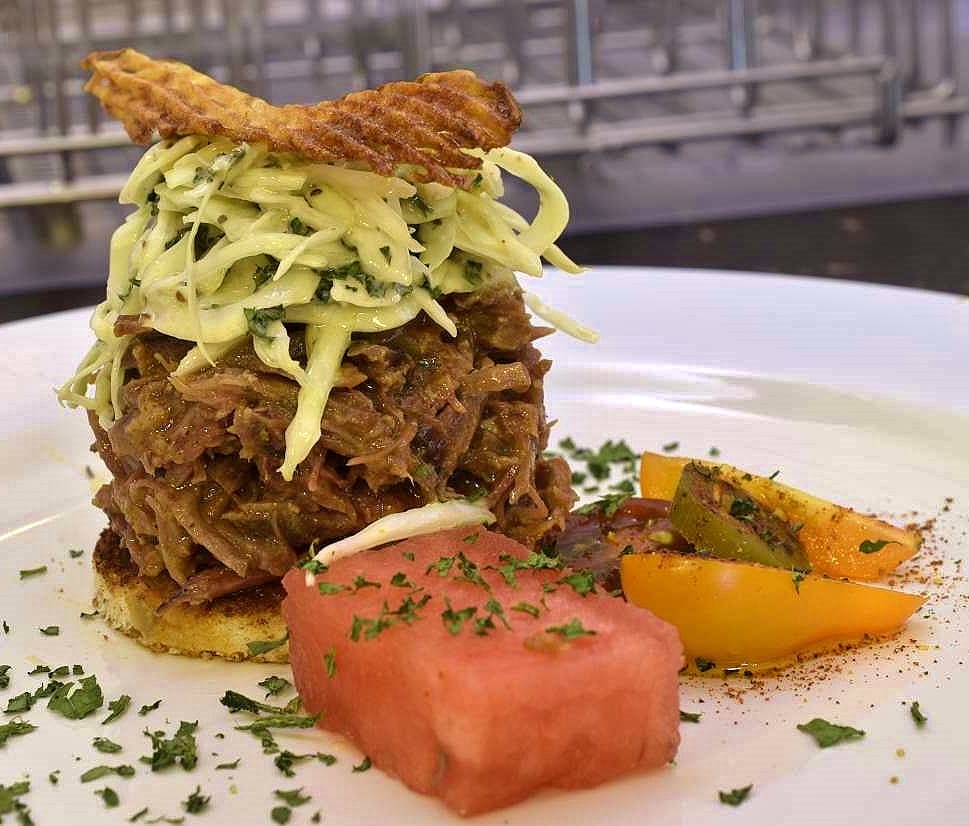
There is no shame in buying potato chips. Less is more–a small piece of watermelon, some cherry tomatoes with a pinch of the seasoning rub and a little extra virgin olive oil is all you really need. Parsley, always parsley.
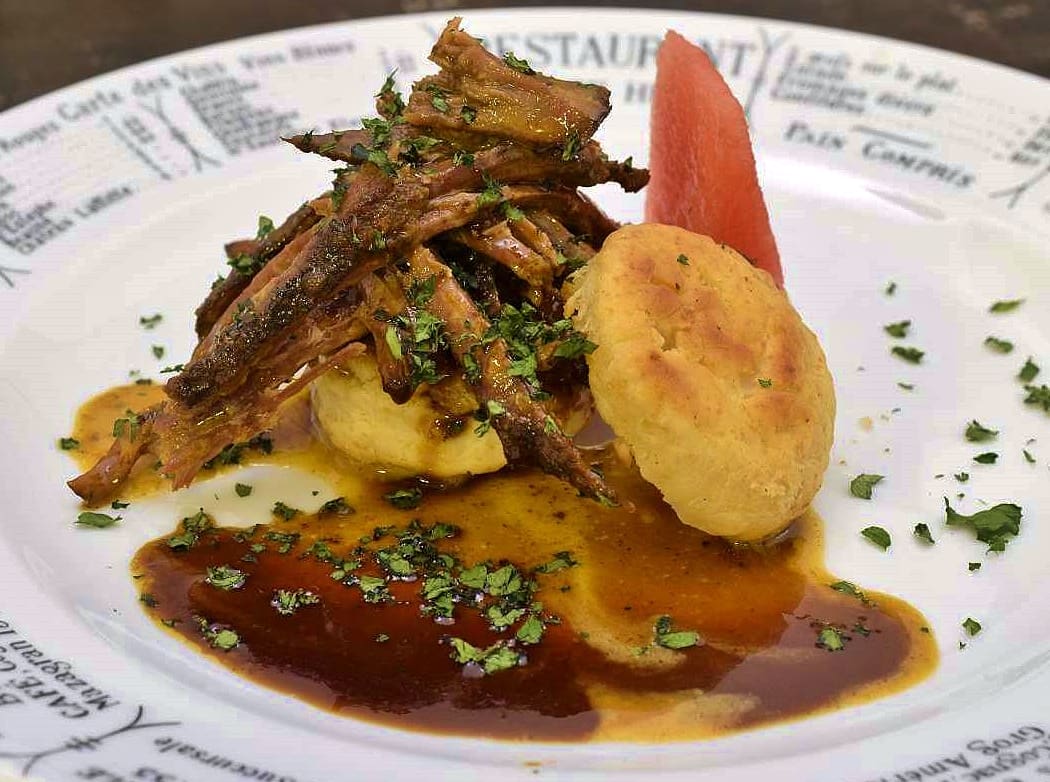
Sans coleslaw and on a biscuit, I pooled a little Balsamic syrup on the plate.
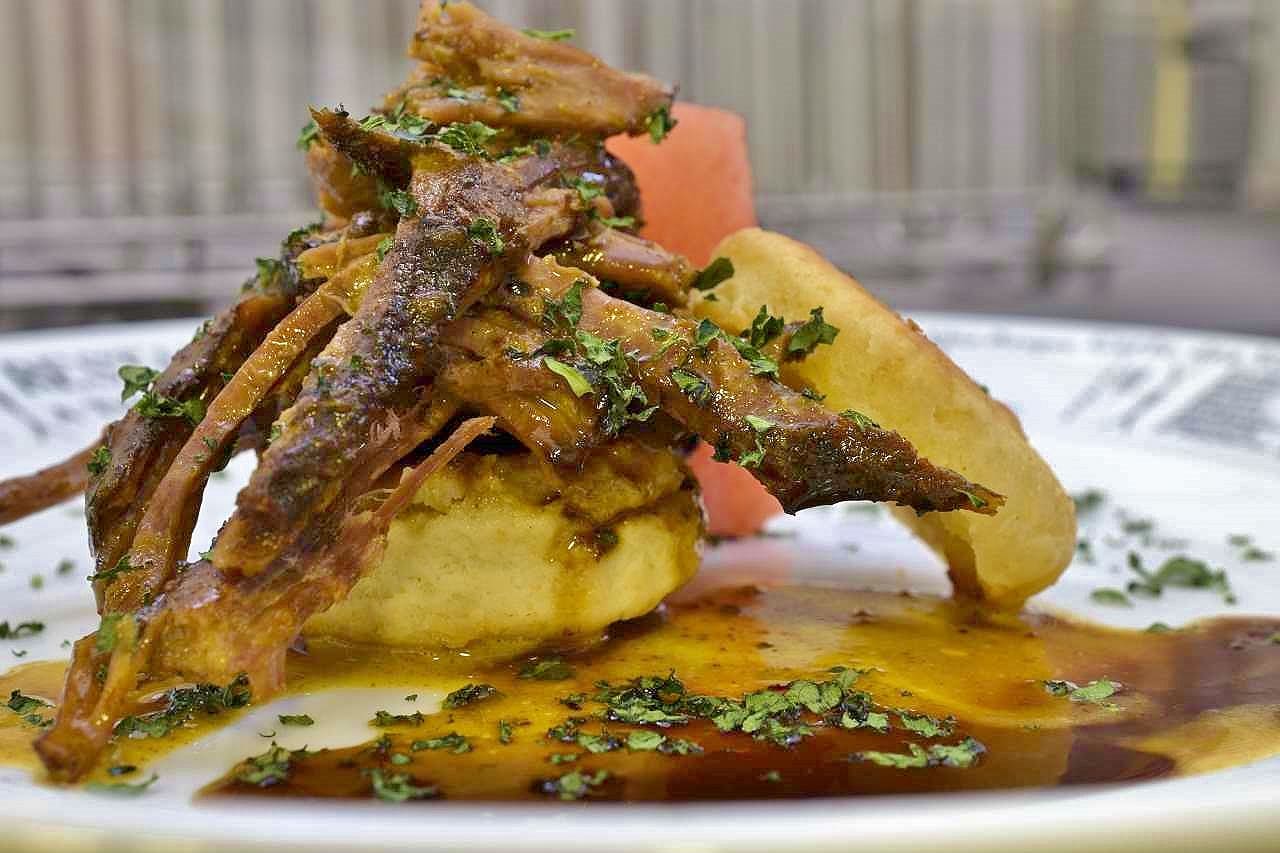
For the ambitious among us who have time on their hands, a few drops of SVR DEMI adds panache.
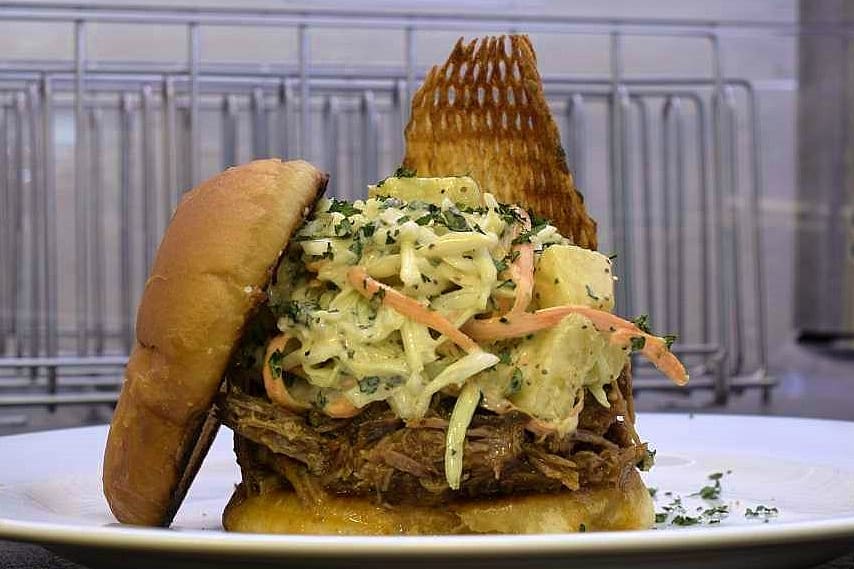
On the traditional buttered and toasted bun, I added a little chopped pineapple to the slaw–I grew up in Nebraska and canned pineapple was a thing.
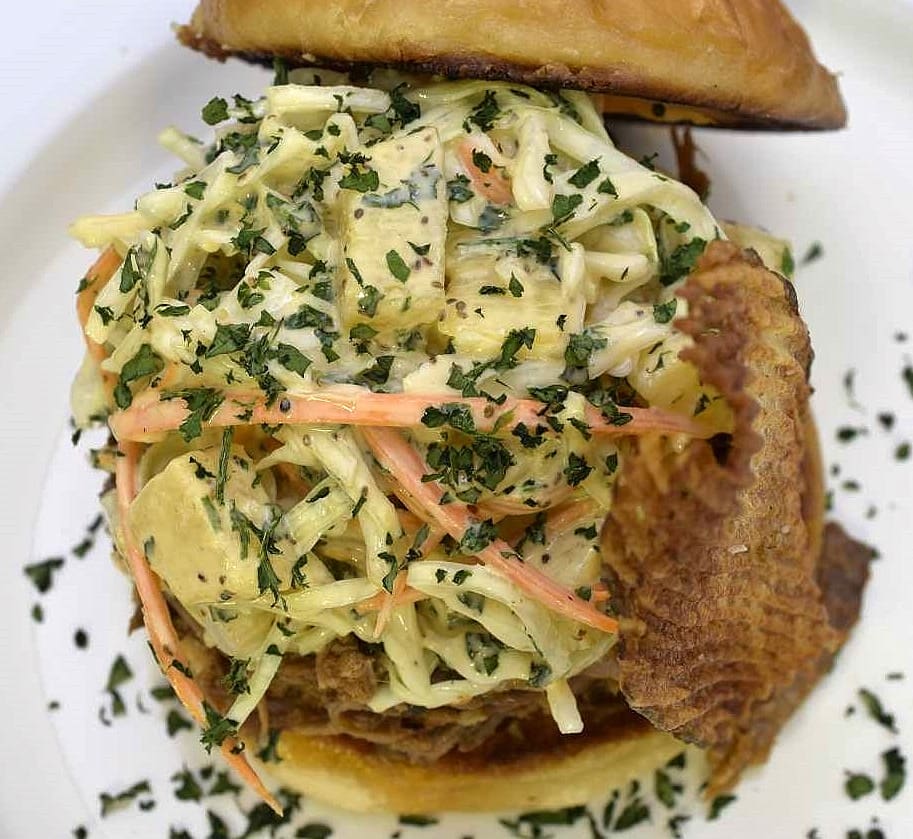
This happens to be fresh.
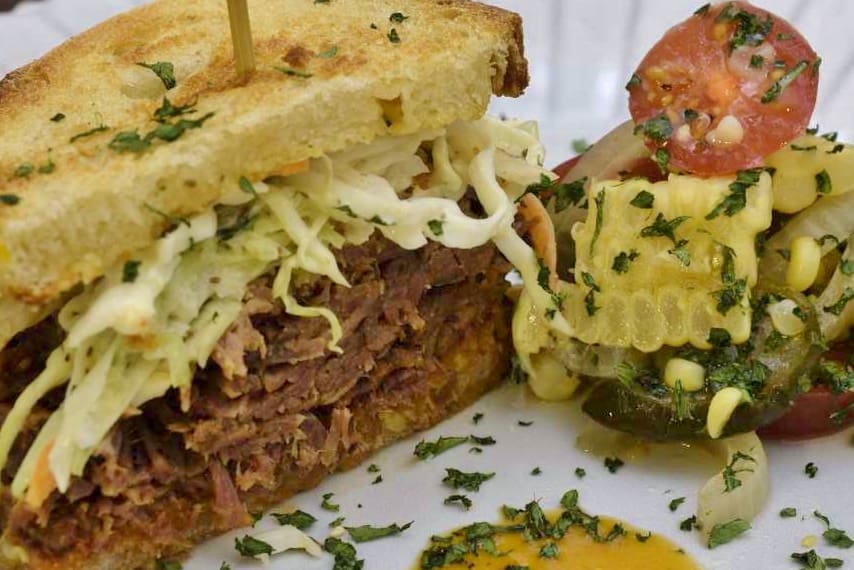
The final upgrade, we used a little Dark Side BBQ Sauce to coat the meat.
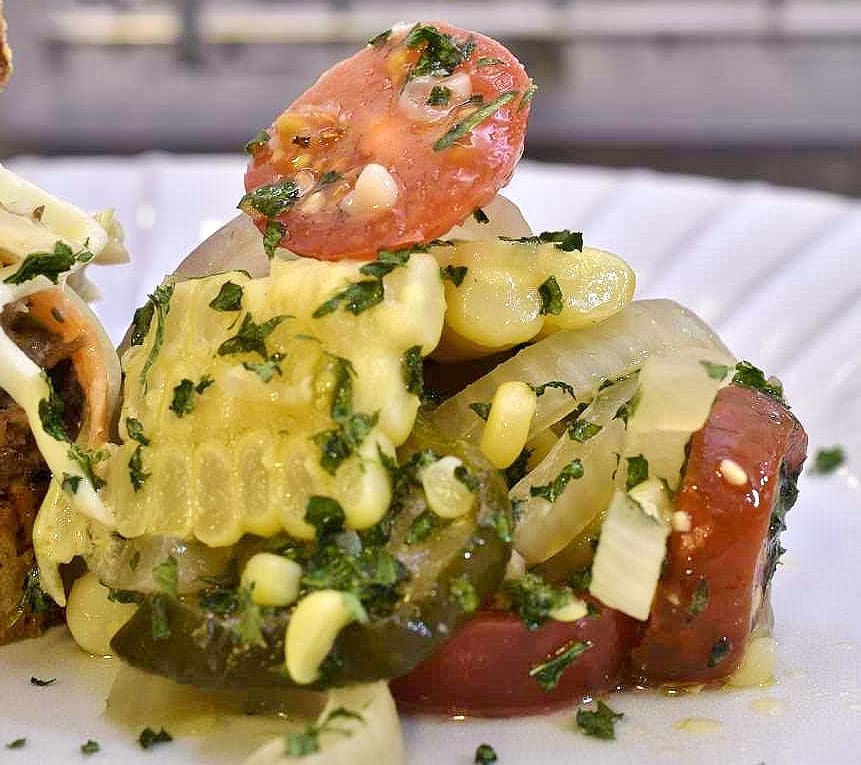
Served on toasted sour dough bread, we made a simple relish of pickles, onions, tomatoes and Sous Vide Corn. All it takes is a little extra virgin olive oil and a pinch of the rub–the pickles provide the tartness, the parsley brings the green!
Browse the site for more Sous-B-Q recipes!
Norm King
